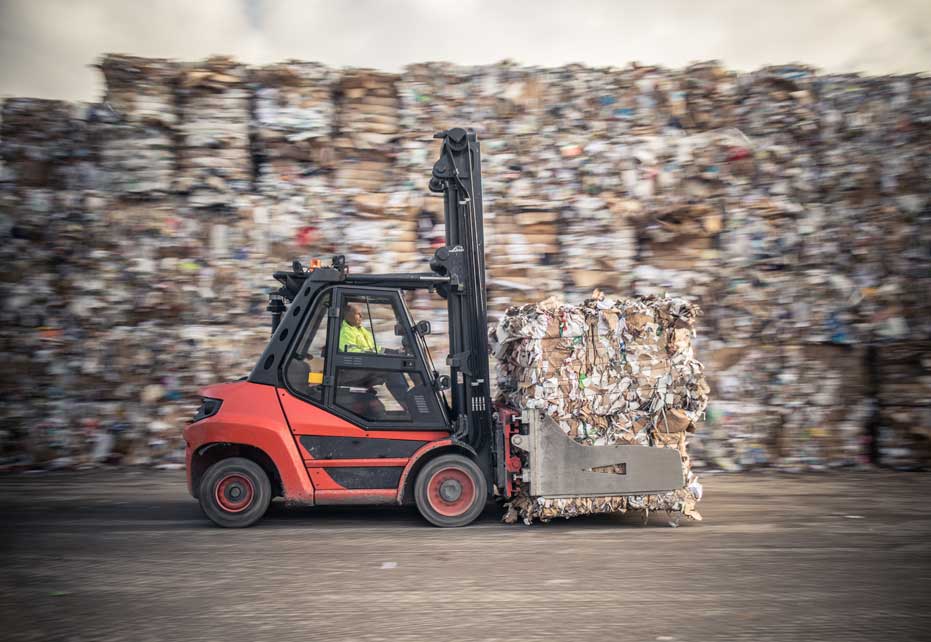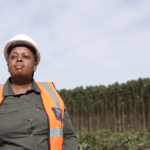The Brussels-based Bureau of International Recycling (BIR) released its quarterly report assessing the state of the recovered paper industry, and for as challenging as the market has been in the United States, the situation does not appear any better across the rest of the globe.
BIR Paper Division President Francisco Donoso of Spain-based Dolaf Servicios Verdes S.L. says the main feature of the recovered paper market has been a lack of demand in all parts of the world, particularly because of low consumption of finished products which has led to weakened demand for packaging material.
The financial crisis, high inflation rates and war in Ukraine likely all have contributed to reduced demand for finished products, Donoso says, but notes that declining freight rates to Asia have dropped enough that, although weak, the market “has retained some life.”
“Prices have been reduced during recent months despite weak supply and low stock levels in collectors’ and paper mills’ yards,” he writes in the “Paper Quarterly Report.”
In Europe, old corrugated container (OCC) and white grade prices have declined approximately 20 euros per metric ton since May, while Donoso says deinking grades have remained relatively stable, albeit low. Similarly, in the U.S., OCC prices have slowly begun to increase but remain well below the highs of the past few years and still are about 60 percent lower than this time last year. Most pricing for other grades in the U.S., however, continue to slump.
The BIR report indicates a different trend in Asia, with increases of up to $15 per metric ton in India and $5 to $10 per ton in other countries. “The reason for this could be low production levels during recent months and weak local collection volumes while paper mills were trying to reduce stock levels in a downward-trending market,” Donoso says. “Mills are now trying to replenish their stocks amid a low collection scenario and so prices are moving slowly upwards.”
China has not provided much relief the past several months, however, as the BIR report notes it has sought very low volumes of recycled pulp from other Asian countries “owing to the global backdrop of low demand for consumer goods and, thus, also for the boxes in which they are packed.”
“Low demand for recycled pulp in China means the same for recovered paper in other Asian countries as that recovered paper is often used to produce recycled pulp for China,” the report says.
European outlook
Jean-Luc Petithuguenin, founder and CEO of France-based Paprec Group, says collection volumes remain around average in France as does demand for various grades, but customers at mills are lacking orders and facing pressure on reel prices, which has put pressure on the recycling industry, too.
“Machine stops are happening every month as a response to market conditions,” he says, noting VPK Group, a European recycled paper and packaging producer, has started up its mill in Alizay, France, but that Norwegian paper company Norske Skog has delayed the startup of a board machine at its Golbey, France, mill until next year.
“The paper market is not performing well, with some grades very difficult to place and prices continuing to fall,” Petithuguenin says. “Customers are running out of orders and slowing their production.”
He adds that no improvement is expected this summer, with analysts anticipating demand remaining about average and inventories rising again in August given announced plant closures.
“It’s hard to predict what the end of the year will bring, but there is no sign of a recovery at present,” Petithuguenin says. “What can be said with certainty is that 2023 is nothing like 2022.”
Volumes of paper and board remain low through the early summer in the German market, too, according to Reinhold Schmidt of Recycling Karla Schmidt, who says there was no improvement in new product orders and sales.
While companies with long-standing relationships in export countries continued to favor sales abroad, those countries still saw low demand for recovered paper, Schmidt says. Recovered paper suppliers’ warehouses carried “almost no stocks” of bulk grades and only partial volumes of multiprint and printing scrap, and on the customer side, many mills continued to reduce recovered fiber volumes.
“For both recyclers and paper producers, the combination of broadly increasing costs and reduced trading volumes is becoming increasingly problematic,” Schmidt says.
In Turkey, where the war in Ukraine as well as natural disaster has broadly impacted business beyond recycling, the market has been experiencing a persistent contraction in demand since the second quarter of last year, and in the second quarter of 2023, resulted in average production utilization capacity of around 70 percent.
“The devastating earthquakes in February this year led to a complete halt in operations at two prominent paper mills in Kahramanmaras which persisted throughout the second quarter,” Turkey-based analyst Ekrem Demircioglu says.
“Grappling with the challenge of low capacity utilization rates and selling prices, paper mills initiated a slight increase in their sales prices during the third quarter in a strategic move which, it is hoped, will provide some financial relief for the sector.”
The BIR report shows the Turkish market witnessing a marked reduction in recovered paper imports. Over the span of six months, it estimates imports have reached approximately 1 million metric tons, with stocks of recovered paper averaging around 35 days among large mills and 15-20 days for smaller mills.
Demircioglu says, however, with several investments currently underway in Turkey, he estimates the country will expand its total production capacity by about 2 million metric tons in 2024.
North American outlook
Like that of the European market, U.S. recovered paper generation remains slow across virtually all grades, and while low generation is fairly typical this time of year as the back-to-school season has yet to ramp up, the BIR report suggest generation this year is even slower than usual.
“Despite continuing sluggish demand, this low generation has mills worrying about adequate supplies,” U.S.-based analyst Myles Cohen writes in the BIR report on behalf of Vipa Group’s Marc Ehrich. “They feel they are competing for fewer and fewer tons, so this means prices are ticking upwards.”
Cohen notes tissue mills are struggling for sales, creating an abundance of high grades inventory, particularly in the U.S. Midwest, and an oversupply of virgin pulp is having an impact on high grades used as pulp substitutes because the prices are moving up or down in tandem.
However, several major paper and packaging companies, including International Paper and WestRock, are project recovered paper growth of nearly 5 percent this year as mills seek more OCC and mixed paper to meet increasing consumer demand for fiber-based packaging.
Does that alone offer some hope for the recovered paper industry?
“While the corner hasn’t been totally turned in favor of robust recovered fiber demand, there is some upward movement on price and optimism for the future,” Cohen writes. “Maybe we can finally say that there is light at the end of the tunnel and some good times lie ahead.”
News : Recycling Today.





